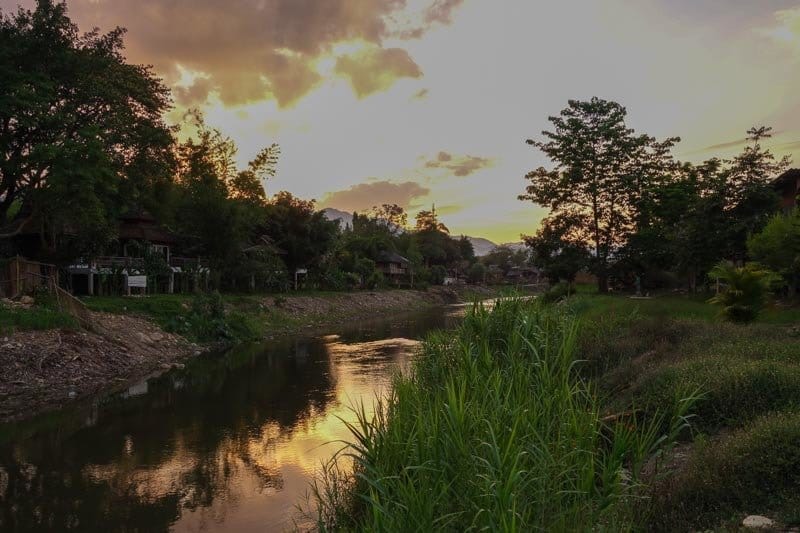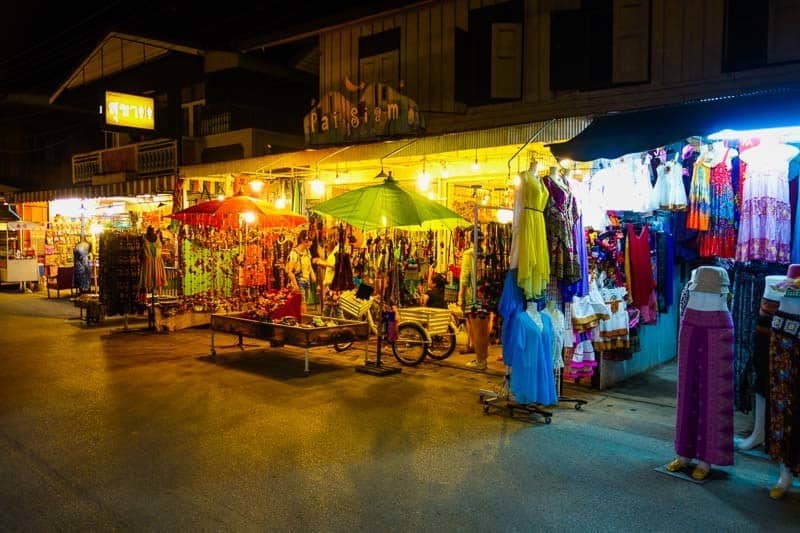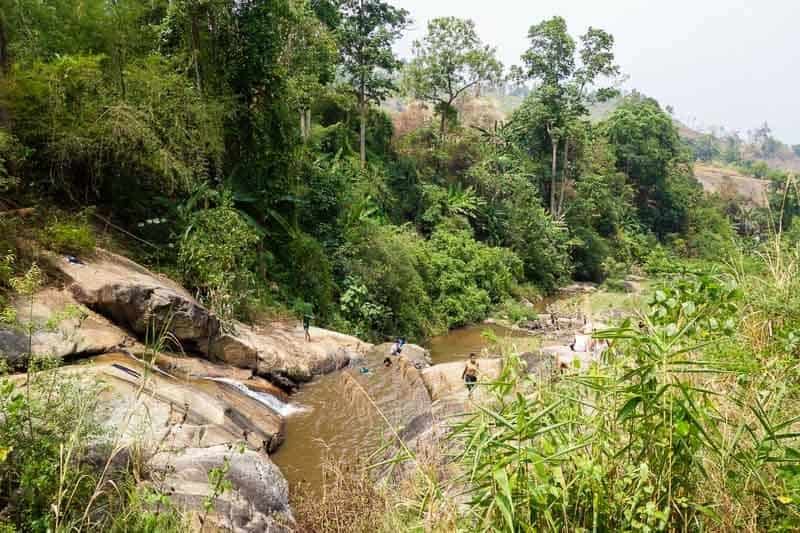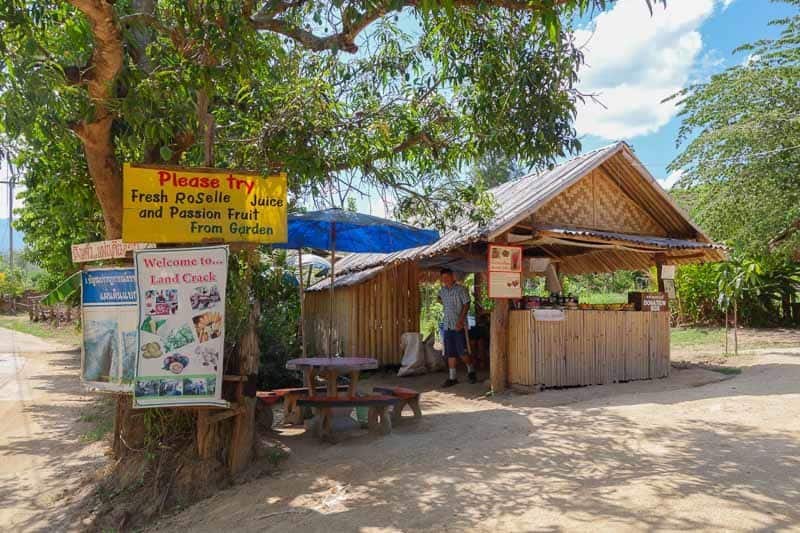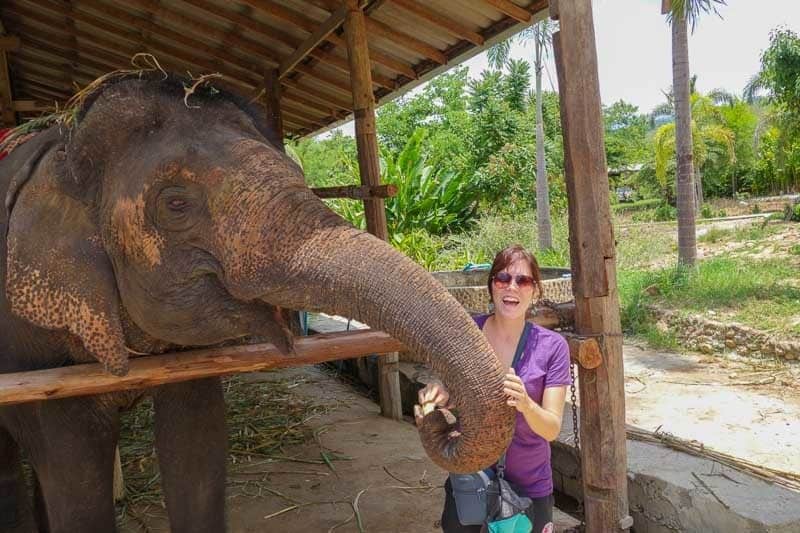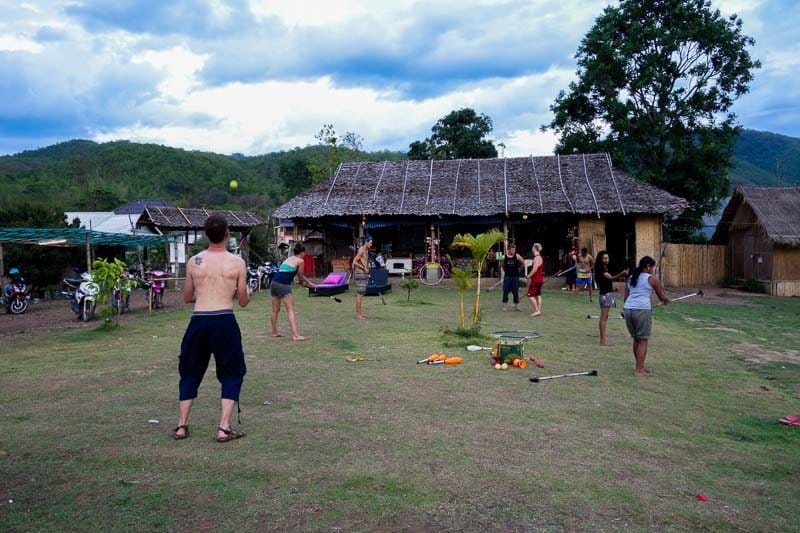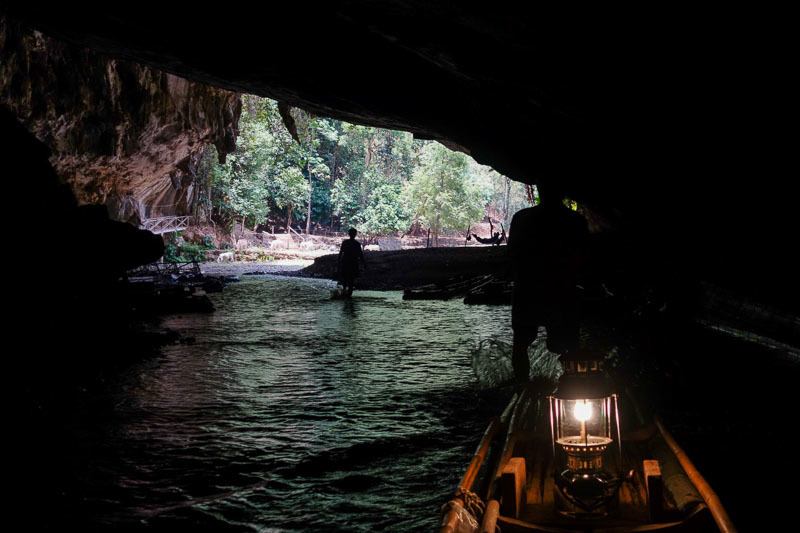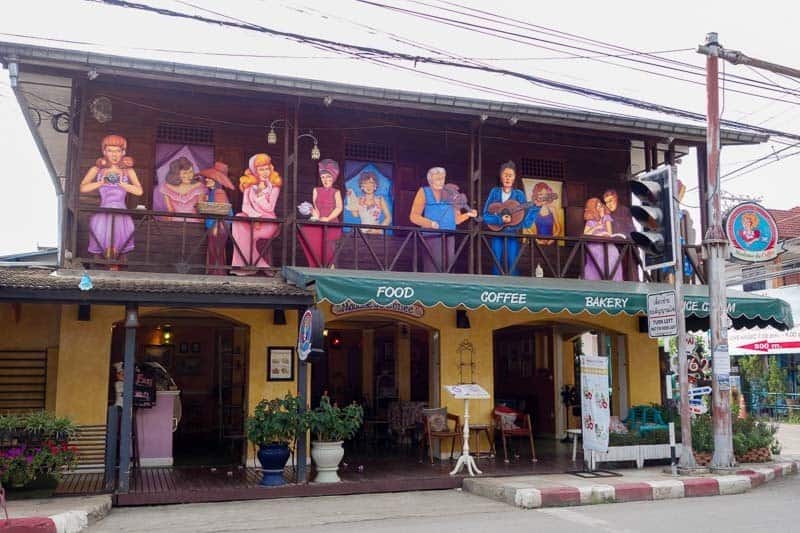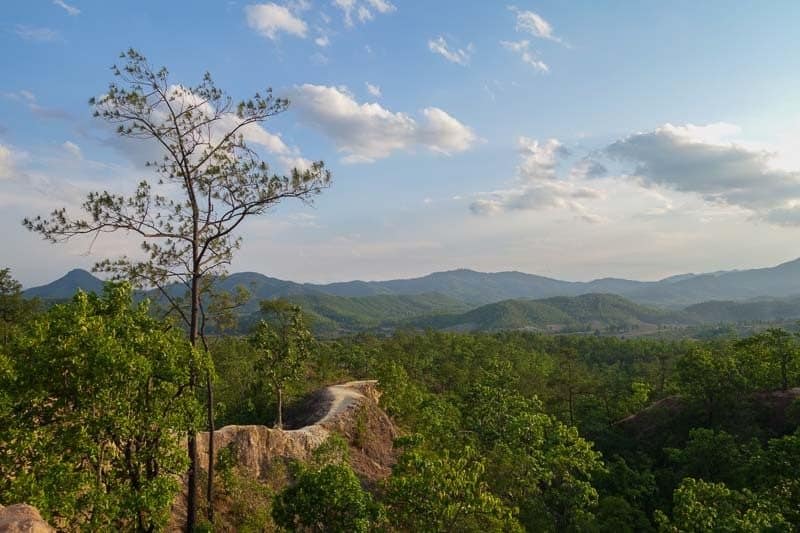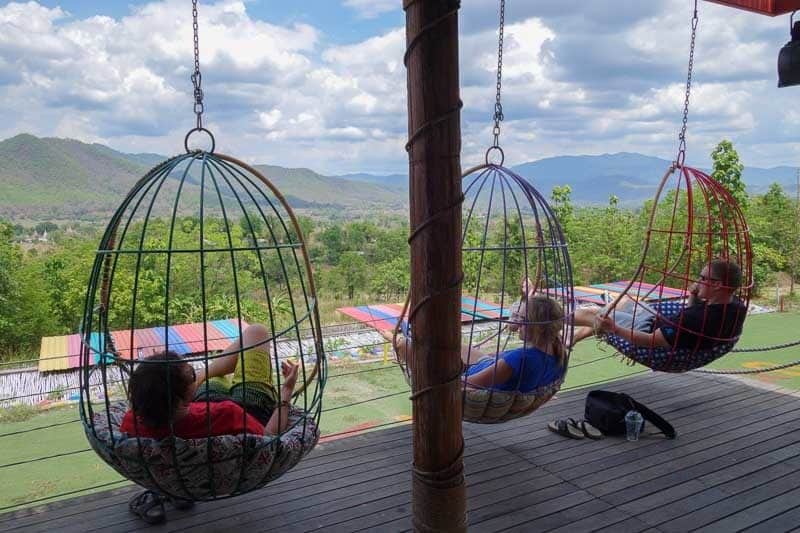Klang TempleWat Klang is located on Chaisongkram road just off walking street in Pai, directly behind Aya Service.
 |
| Wat Klang |
It was built in 1792 and like Wat Luang, was for many years a deserted monastery.
Today Wat Klang is one of the more significant temples in Pai as it houses very old and revered Buddha statues.
The most striking aspect about the temple is the Mon (Burmese) golden pagoda that houses and protects these statues.
 |
| Wat Nam Hoo |
Wat Nam HooThis is the story of its Buddha that makes this temple interesting and famous in Pai Province. For the rest do not expect to find a amzing architecture and breathtaking statues. The legend of the bronze Buddha one-mueang which some attribute to King Naresuan, who had offered it to his sister before she went to live as a hostage in the palace of the King of Burma, says that holy water sprung from the head of the statue and makes. That is why it is a particularly Buddha image.
Believers come to pray and pay homage to its legendary statue but tourists mostly come to Wat Nam Hoo for the ride, combined with Chinese and Lisu villages and Mo Paeng waterfall.
Wat Luang Pai
Wat Luang Pai
Wat Luang is located on Hwy 1095, (the stretch that actually goes through town) & is approximately 200m from the end of Walking Street.
 |
| Wat Luang Pai |
It’s has a beautiful white Thai-Yai (Shan) Chedi in the middle of the temple grounds with smaller Mon Chedi’s surrounding it.
Wat Luang was built in 1803 & was, for a time, a deserted monastery with a large Buddha statute in its grounds. Later as Pai became established as a community centre, a former Ni-Amphur (Chief Administrator) of Pai, Phraya Rajcha, built the Chedi over the top of the statue to protect it because it is believed by locals that the statue protects the town.
What is actually revered about Wat Luang is hidden from plain view beneath the beautiful white Chedi.
Wat Phra Thart Jom Jaeng
 |
| Wat Phra That Chom Chaeng |
Wat Phra That Chom Chaeng, aka Wat Phra That Jom Jang, is only a couple of kilometres beyond the much more famous Wat Phra That Cho Hae on the same 1022 road, around 10 kms to the east of Phrae City. Most visitors to Phrae will only get as far as Cho Hae but it is a pity as although.
Wat Phra That Mae Yen
This small temple on a hill 2 km from Pai is especially interesting for its setting and the view overlooking the city you have from it.
The 353 steps long staircase to reach the temple is charming even if you can skip it and take the road to access to Wat Phra That Mae Yen.
The temple consists of two buildings and a few small golden chedis. In front of the temple entrance, there is a little market with stalls where you can buy products, mainly hats and scarves knitted by the vendors. They can be very useful because it is cold at night and in the early morning in Pai.
There are also two coffee shops. Behind the amrket, there is another Wihaan housing a reclining Buddha. And over the hill behind it, a large stitting Buddha is under construction and should be visible from far away. If you have the courage and the curiosity, you can already take the small path behind the building of the Reclining Buddha and have a look at the unfinished Big Buddha.
Phra That Mae Yen is one of most accessible attraction by bicycle around Pai and a good introduction to your stay in Pai.
Read more details
 |
| Wat Phra That Mae Yen |
The 353 steps long staircase to reach the temple is charming even if you can skip it and take the road to access to Wat Phra That Mae Yen.
The temple consists of two buildings and a few small golden chedis. In front of the temple entrance, there is a little market with stalls where you can buy products, mainly hats and scarves knitted by the vendors. They can be very useful because it is cold at night and in the early morning in Pai.
There are also two coffee shops. Behind the amrket, there is another Wihaan housing a reclining Buddha. And over the hill behind it, a large stitting Buddha is under construction and should be visible from far away. If you have the courage and the curiosity, you can already take the small path behind the building of the Reclining Buddha and have a look at the unfinished Big Buddha.
Read more details
http://www.thailandee.com/eng/see-visit-thailand/wat-nam-hoo-pai-163
http://paiexplorer.com/?p=3775
http://paiexplorer.com/?p=3775
 , and endless beauty extending in every direction.
, and endless beauty extending in every direction.